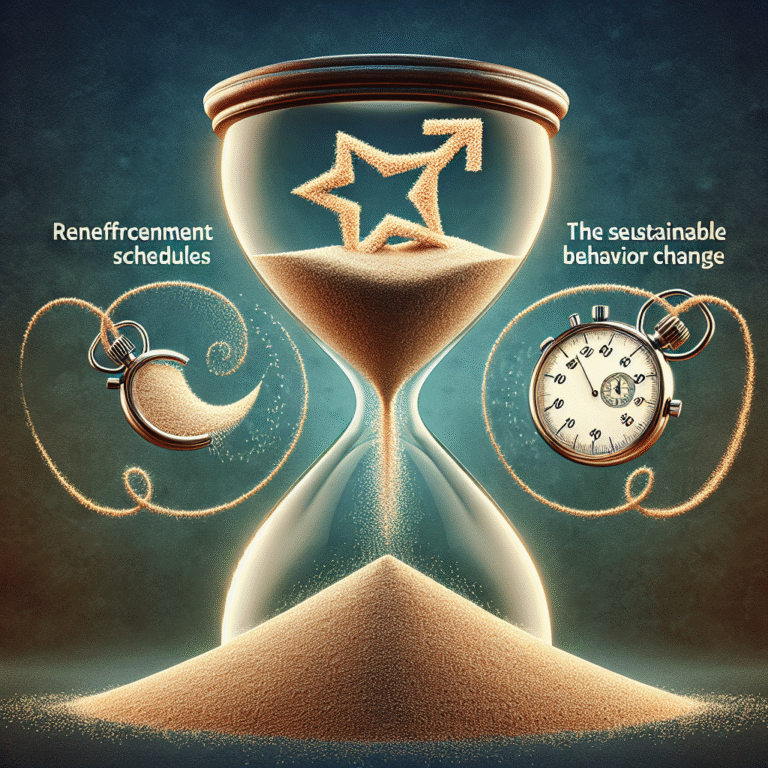
Introduction
Language is a profound tool that shapes our interactions, thoughts, and identities. But how do children move from the simplicity of sounds to the complexities of syntax? The journey of language acquisition is not merely an academic interest; it directly influences cognitive development, social skills, and emotional growth. In this article, we’ll explore the fascinating transition from sounds to syntax, illuminating the stages of language mastery and the factors that contribute to successful outcomes. Join us as we unravel the mystique behind "From Sounds to Syntax: How Children Master Language Skills" and delve into the science, strategies, and stories behind this remarkable journey.
The Foundations of Language: Understanding Sounds
Phonetics and Phonology
Before a child can craft complex sentences, they must first understand the basic building blocks of spoken language: sounds. Phonetics and phonology study how sounds are produced and used in different languages. The intricate sounds that form words are initially perceived as abstract stimuli to infants, who are primed to discern subtle auditory differences.
Case Study: The Infant Brain and Sound Recognition
Research shows that infants as young as six months can differentiate between phonetic sounds, recognizing their native language’s rhythm and melody. For instance, a study published in Developmental Science reveals that infants exposed to varying languages can distinguish between differing vowel sounds significantly better than adults. This ability highlights a crucial developmental window where children are capable of mastering the acoustic properties of language, setting the stage for syntax acquisition.
The Role of Babbling
Babbling is more than just playful noise; it represents a critical linguistic milestone. Children begin this verbal play around six months of age, experimenting with different sounds. This process is instrumental to their later ability to form words and sentences.
Analysis: Contextualizing Babbling in Language Acquisition
Babbling allows infants to practice articulate sounds without the pressure of meaningful communication. As they experiment with sounds, they also learn the rhythm and patterns of their native language—a key precursor to the understanding of syntax.
Sound Play: Mimicking and Reinforcement
Around the age of 12 months, children start imitating sounds and words spoken by those around them. The social interaction provided by caregivers is essential, reinforcing the sounds they hear and encouraging further exploration.
Table 1: The Timeline of Sound Acquisition in Early Childhood
| Age Range | Milestone |
|---|---|
| 0-6 months | Sound discrimination |
| 6-12 months | Babbling |
| 12-18 months | Imitation |
| 18-24 months | First words |
Transitioning to Words: Linking Sounds to Meaning
The First Words: Vocabulary Explosion
Around their first birthday, children typically utter their first meaningful words. This leap from sounds to actual vocabulary marks a pivotal point in their language development. The ability to attach meaning to sounds introduces the potential for more complex communication.
Case Study: Vocabulary Development in Bilingual Children
Research conducted by the University of Washington showcased how bilingual children often have an expansive vocabulary across both languages by the age of three. This exposure provides them with a diverse linguistic toolbox, allowing for flexibility in thought and expression. The study highlighted that bilingual children not only develop a rich vocabulary but also achieve greater mastery of syntax, indicating that early language exposure significantly influences long-term linguistic abilities.
The Vocabulary-Syntax Connection
As children’s vocabulary expands, so does their understanding of syntax. Mastery of words provides the necessary components for sentence construction. Children begin stringing words together, moving from single words to two-word phrases.
Analysis: The Two-Word Stage
Around 18-24 months, children enter the two-word stage (e.g., "want cookie"). This stage marks the transition from vocabulary to basic syntax, indicating an emerging ability to understand the relationships between words. It’s fascinating to note that children often follow their native language’s syntax rules instinctively, showcasing their innate language faculties.
The Complexity of Syntax: Constructing Meaningful Sentences
Sentence Structure and Grammar
The next leap occurs as children master more complex sentence structures. Mastering syntax goes beyond simply knowing words; it involves understanding how to connect those words correctly to convey meaning.
Case Study: Grammatical Understanding in Early Literacy
A longitudinal study by Stanford University illustrated that children who engage with literature from an early age develop syntax awareness significantly earlier than those who do not. The study traced children from preschool into elementary school, revealing that early exposure to varied sentence structures—through storytelling—enhanced their grammatical abilities and provided a deeper understanding of language rules.
The Role of Social Interaction
Language is inherently social, and interactions with caregivers and peers significantly affect how children learn syntax. Research has demonstrated that conversational turn-taking reinforces grammatical structures and challenges children to think critically about language use.
Analysis: The Impact of Responsive Communication
Children who are engaged by their caregivers in responsive communication—where their attempts at speech are acknowledged and built upon—tend to develop stronger syntax skills. It fosters an environment of language play and experimentation, integral to learning more complex structures.
Enhancing Language Skills: Practical Strategies for Caregivers and Educators
Creating a Language-Rich Environment
Encouraging language acquisition involves fostering an environment rich in linguistic stimulation. Here are strategies to enhance children’s language skills:
- Read Aloud Daily: Engaging stories expose children to varied vocabulary and sentence structures.
- Encourage Playful Language Use: Games and rhymes promote sound recognition and word formation.
- Practice Conversations: Provide opportunities for children to express themselves and build their sentences.
- Use Varied Vocabulary: Introduce new words in context to enhance meaning and understanding.
Table 2: Strategies for Enhancing Language Skills
| Strategy | Description |
|---|---|
| Reading Aloud | Engages vocabulary and syntax |
| Language Games | Encourages sound recognition |
| Conversational Practice | Builds confidence in sentence formation |
| Varied Vocabulary | Expands word knowledge |
The Power of Technology
In our digital age, educational apps and interactive tools can complement traditional methods in language learning. Programs designed for children can adapt to their individual learning pace, aiding in phonics, vocabulary, and syntax mastery.
Case Study: Effectiveness of Educational Apps
A study from MIT showed that preschoolers using language-learning apps demonstrated enhanced vocabulary retention and syntactic understanding compared to those who engaged only with traditional materials. The gamified approach helped retain attention and facilitate learning, showcasing technology’s role in modern language acquisition.
The Importance of Multilingualism: Benefits Beyond Syntax
Cognitive Advantages
Exposure to multiple languages not only enhances linguistic ability but also boosts cognitive flexibility and problem-solving skills. Multilingual children often outperform their monolingual peers on tasks requiring multitasking and mental flexibility.
Case Study: Cognitive Development in Multilingual Settings
A study by the University of Edinburgh found that multilingual children showed stronger executive function skills, indicating improved attentional control and cognitive flexibility. These advantages underscore the importance of fostering multilingual environments during early childhood.
Strengthening Cultural Awareness
Language is tied deeply to culture. Children who learn multiple languages gain insights into diverse perspectives and customs, enhancing their social awareness and empathy.
Conclusion: Empowering Future Generations
The journey from sounds to syntax is not merely a developmental milestone; it is a cornerstone of human connection and understanding. By creating rich linguistic environments, encouraging playful interactions, and embracing the benefits of multilingualism, we can empower children to master language skills that will serve them for a lifetime. As parents, educators, and caregivers, our role is to be the guiding hands that help shape confident communicators and critical thinkers.
In summary, the insights gained from "From Sounds to Syntax: How Children Master Language Skills" can inspire us all to invest in the linguistic futures of our children. Let us spread this knowledge to empower the next generation of speakers, thinkers, and doers.
FAQs
1. At what age do children typically start babbling?
Children generally begin babbling around six months of age. This stage is crucial for developing phonetic awareness and preparing for word formation.
2. How can parents encourage their children to develop strong language skills?
Reading aloud, engaging in conversation, and using varied vocabulary are effective strategies. Creating a language-rich environment fosters natural language acquisition.
3. What are the benefits of bilingualism for children?
Bilingual children often show enhanced cognitive flexibility, problem-solving skills, and cultural awareness, leading to better overall communication abilities.
4. Are educational apps effective for language learning in young children?
Yes, studies indicate that interactive educational apps can support vocabulary retention and syntactic understanding, making them a valuable tool in language acquisition.
5. How does social interaction influence language development?
Responsive communication with caregivers and peers fosters language skills by challenging children to express themselves and learn complex sentence structures, significantly enhancing their overall linguistic abilities.
By integrating these insights, we can nurture language skills that not only promote communication but also enrich the intellectual and emotional lives of children. Let’s invest in their linguistic journeys, embracing the profound impact of language as a fundamental aspect of human experience.














